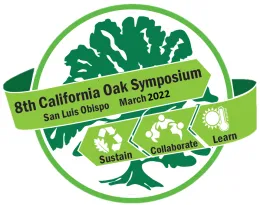The Future: The Uncertain Future of California's Oak Woodlands

California oak woodlands have long been impacted by biotic invasions, altered fire regimes, and changes in land use and land management. Rapid climate change affects all of these processes and has myriad other direct and indirect effects on oak woodlands and associated species. Thus forecasting the future of oak woodlands is riddled with uncertainty, and that uncertainty can only be reduced through more integrated modeling, monitoring and experimentation.
This talk reviews recent research to help anticipate and manage climate-driven changes in oak woodlands, particularly research focused on future distribution and abundance of dominant oak species. Species distribution models indicate potentially large range shifts for most species. Actual range shifts are likely to be less pronounced due to microclimate buffering in rugged areas as well abiotic and biotic constraints on seed dispersal and tree establishment. Landscape models that incorporate dispersal, establishment and disturbance suggest that expansion of oaks into areas now dominated by chaparral or conifer forests depends on fire regimes and interannual rainfall variability. Projections will benefit from improving mechanistic vegetation models linking climate to oak physiology and growth.
